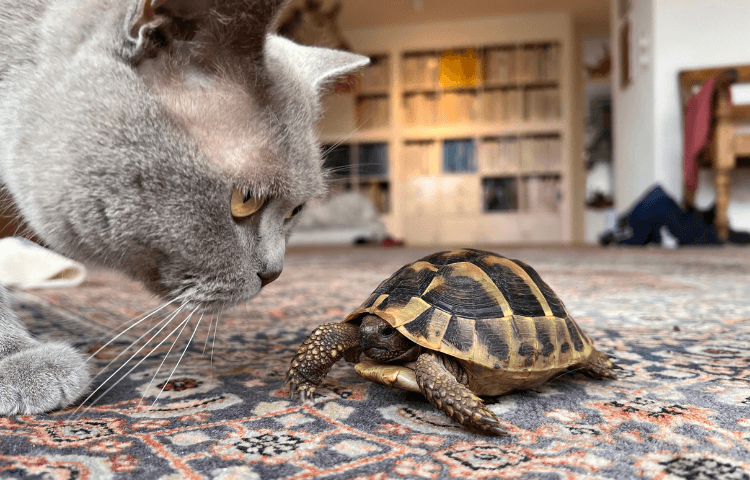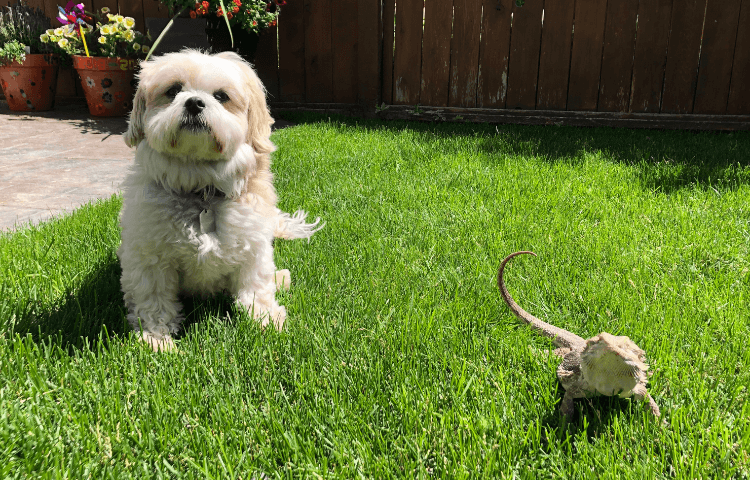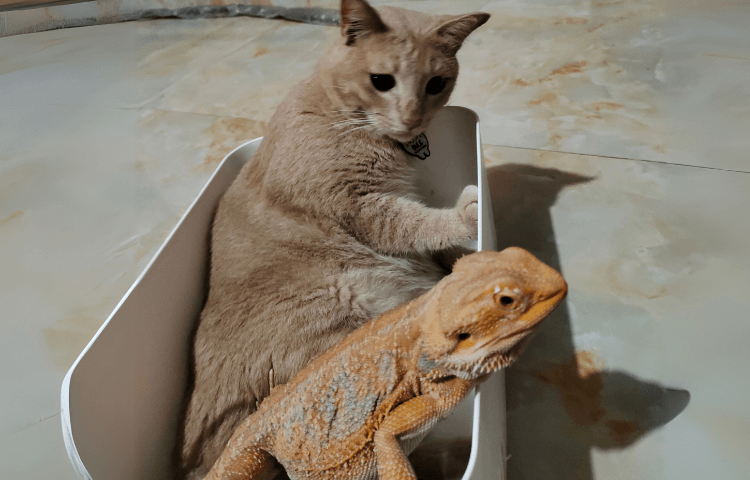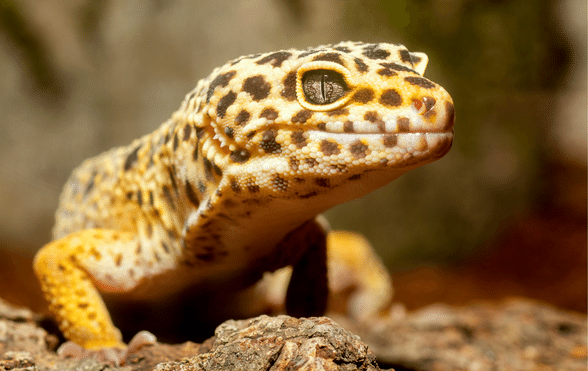Owning domestic pets and reptiles in the same house
Reptile expert, Pete Hawkins, shares his top tips to keep both traditional pets and reptiles safe and happy in your home.
Sharing your home with both reptiles and traditional pets – like cats or dogs – can be a rewarding experience. However, it requires careful planning to ensure the safety and well-being of all animals involved. This guide offers practical advice on creating a harmonious environment for your diverse pet family.
We also have a number of other guides to help with exotic pet ownership, such as our Bearded Dragon Diet Guide, so it’s worth checking out our other articles too.
Understanding the dynamics between reptiles and domestic pets
Reptiles, such as bearded dragons, snakes, and tortoises, have unique needs and behaviours that differ significantly from those of cats and dogs. While dogs may respond to training and commands, cats are more independent, making interactions with reptiles unpredictable. It’s essential to recognise that reptiles may perceive other animals as threats, leading to stress or defensive behaviour.

Creating a safe and stress-free environment
1. Strategic Enclosure Placement
- Elevate Enclosures: Position reptile enclosures above the eye level of other pets to minimise stress.
- Secure Enclosures: Ensure that enclosures are sturdy and cannot be easily accessed or knocked over by curious pets.
2. Dedicated Reptile Spaces
- Reptile-Only Rooms: If possible, allocate a separate room exclusively for your reptiles to prevent unwanted interactions.
- Garage Considerations: If using a garage, ensure it’s free from vehicles to avoid exposure to harmful fumes.
Have a read of our tortoise set up guide for further advice on enclosures, heating and temperature.

Supervised outdoor time for reptiles
Reptiles benefit from natural sunlight, which aids in their overall health. When providing outdoor time:
- Use Secure Playpens: Employ rabbit runs or child playpens to create a safe outdoor space.
- Supervise Constantly: Never leave reptiles unattended outdoors, and keep other pets indoors during this time.
- Avoid Contaminated Areas: Ensure the outdoor space is free from areas where other pets have toileted to prevent health risks.

Avoid direct interactions between reptiles and other pets
While social media may showcase images of reptiles and dogs or cats interacting peacefully, it’s crucial to understand the risks involved:
- Stress and Injury: Reptiles may become stressed or defensive, leading to potential injuries for both animals.
- Unpredictable Reactions: Even well-trained pets can react unpredictably to sudden movements from reptiles.
Hygiene and health considerations:
- Hand Hygiene: Always wash your hands thoroughly before and after handling reptiles to prevent the spread of bacteria like Salmonella.
- Cross-Contamination: Be mindful of the potential for cross-contamination between reptiles and other pets, especially concerning shared spaces.

Importance of pet insurance
Accidents and health issues can arise despite the best precautions. Having comprehensive pet insurance ensures that you can provide the necessary care without financial strain. ExoticDirect specialises in exotic pet insurance, offering tailored policies for reptiles and other non-traditional pets. You can get a quote easily today in just a few minutes by clicking here.
Conclusion
Successfully keeping reptiles alongside cats or dogs requires thoughtful planning, dedicated spaces, and a commitment to the well-being of all pets involved. By implementing the strategies outlined above and securing appropriate insurance cover, you can create a safe and harmonious environment for your diverse pet household.

